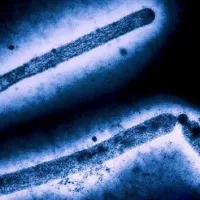
(FLORIDA) — A harmful algae bloom is killing marine life and keeping residents and tourists away from beaches as it creeps up the coast of Southwest Florida.
Red tide is currently plaguing more than 150 miles of coastline from Naples to north of Clearwater, experts told ABC News. Clearwater and regions along the St. Joseph Sound are among the beaches that have “high” levels of the harmful bloom, or more than 1 million Karenia brevis cells per liter, a map with data compiled by Florida Fish and Wildlife showed.
The red tide is covering more of the coast than other blooms that typically occur in March, Rick Stumpf, an oceanographer with the National Oceanic and Atmospheric Administration, told ABC News.
The current bloom is a continuation of a bloom that began in October, shortly after Hurricane Ian wreaked havoc in places like Fort Myers and Sanibel Island, Leah Reidenbach, research and policy associate at the Sanibel-Captiva Conservation Foundation’s marine laboratory, told ABC News. The runoff produced by the disturbance from the hurricane was inundated with pollution and nutrients, which allowed the bloom to flourish, Reidenbach said.
This red tide has persisted due to a lack of steady northerly winds that typically would have pushed the bloom further south into the Gulf of Mexico, Stumpf said.
Instead, the blooms have hung around the coast and keep getting pushed in by onshore winds, Stumpf said.
Red tide is a natural phenomenon caused by an overgrowth or accumulation of microscopic algae in marine or brackish water, according to the FWC. The circulation of ocean water can determine whether red tide will occur, with high circulation often producing deep, nutrient-rich ocean water to the area, which prevents the toxins from blooming.
The bloom is a common occurrence in Florida, typically popping up seasonally from the later summer through early fall and winter.
Red ride produces toxins that can sicken or kill fish, seabirds, turtles and marine mammals, such as manatees, according to the FWC.
Photos taken on Fort Myers Beach on Monday show dozens of dead fish littering the shore.
Fort Myers Beach has hauled off more than 10 tons of dead fish since Monday, the Fort Myers News-Press reported.
Researchers are concerned about how red tide affects the region’s ecology, especially now that larger fish that tend to remain offshore — like tarpon, grouper — are beginning to wash ashore, Reidenbach said. The toxins could also be moving up the food chain as smaller fish are eaten by bigger fish, which is what happened during a particularly bad outbreak in 2018 when larger marine life like manatees, dolphins and whale sharks, as well as various seabirds, were dying from the blooms.
The same onshore wind that is bringing dead fish to the beaches can also cause respiratory irritation in humans further away from the coast, as the toxins red tide produces can become an aerosol when they break down, Stumpf said.
The effects are typically temporary unless the person suffers from severe or chronic respiratory conditions, such as asthma.
People in coastal areas can experience varying degrees of eye, nose and throat irritation. However, people typically are not affected by swimming in waters infested with red tide.
Over the next 36 hrs, @NOAACoastalSci is forecasting a HIGH risk of respiratory irritation from Karenia brevis (red tide) at some beaches in CHARLOTTE, MANATEE, PINELLAS and SARASOTA counties. Conditions may vary. For the latest at individual beaches, see https://t.co/tc4O9Me2gL pic.twitter.com/JMMO2Vo8ao
— NWS Tampa Bay (@NWSTampaBay) March 6, 2023
It is currently difficult to forecast red tide, Stumpf said. Data from the University of South Florida and the FWC can only predict red tide activity and how it may change up and down the coast about 3.5 days ahead, Matt Garrett, associate research scientist for the Florida Fish and Wildlife Conservation Commission, told ABC News.
The best guess researchers can make is by tracking the direction of wind, but things like disease and viruses can also attack the blooms, causing them to dissipate, he added.
There are concerns that the bloom may stick around for another few weeks, but it’s too early to judge, Stumpf said.
The red tide has hindered the ability for communities devastated by Hurricane Ian to “get back to normal,” Reidenbach said. The sight of dead fish may not be appealing to tourists and residents alike who are attempting to recreate outdoors.
“Our businesses and our beaches are starting to reopen, but people aren’t coming,” Reidenbach said. “We’re still being held back economically because of red tide.”
In 2018, then-Gov. Rick Scott declared a state of emergency to allow biologists and scientists to assist with cleanup and animal rescue efforts.
Copyright © 2023, ABC Audio. All rights reserved.















